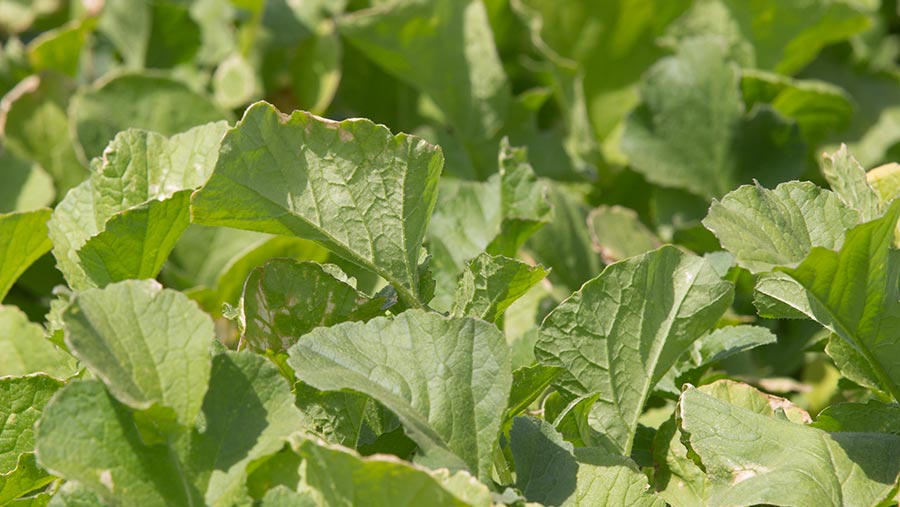Cover crops can lift sugar beet yields, research shows
 © Tim Scrivener
© Tim Scrivener Research on the role of cover crops in sugar beet rotations suggests they can be a useful tool, but further on-farm development and refinement will be needed for individual situations.
A British Beet Research Organisation (BBRO) investigation of 12 different cover crop mixes used in a range of systems and with different destruction methods showed there was a yield increase in the following beet crop in 42% of situations.
See also: Advice on using starter fertiliser to lift sugar beet yields
“That figure rose to 50% for min-till regimes and 60% if there was more than one cover crop in the rotation,” says Simon Bowen of BBRO. “The yield increase in beet was somewhere between 5-10%.”
BeetTech19
Simon Bowen was speaking at the BBRO’s BeetTech19 winter technical event, which took place in Newmarket and Grantham.
He believes they are beginning to piece together a picture on cover crops, and has come up with some consistent observations:
- Be clear about what you want them to do – for example, soil structuring or beet cyst nematode management
- Single- and double-species mixes are preferred
- No advantage from multispecies mixes
- Better performance from early drilling
- For later-drilled cover crops and dry conditions, use higher seed rates
- Inclusion of legumes will add nitrogen
- Higher soil mineral nitrogen may allow a reduction in applied N
- Earthworm numbers increase
- Nitrogen lock-up is not an issue where a five- to six-week gap is maintained
- Sheep grazing of cover crops works well
Further field work conducted by Jake Richards at three farm sites in 2018 has shown cover crops help to dry the soil profile in the autumn, alter soil aggregation and increase the amount of nitrogen in the sugar beet canopy.
“Having more nitrogen in the canopy can have an effect on sugar yield. On clay, that was detrimental but on a light, sandy soil it was beneficial.”
Grower experiences with cover crops
Ollie Scott, Thelveton Farms, Norfolk Use of an oats/radish cover crop in a min-till regime has improved soil texture, helped with drought tolerance and raised sugar beet yields by 15%.
Early establishment has been key to their success.
Simon Brock, Swanton Morley Farms, Norfolk Four years of assessing a radish-based cover crop have given no consistent effect on beet yields, with more work needed on establishment and destruction technique before Mr Brock is convinced about their place.
Simon Eddell, Rougham Estate, Suffolk Rye/vetch mix and sheep grazing used with reduced tillage as part of a light land management strategy.
Consistent improvement in soil N levels has allowed Mr Eddell to reduce reliance on bagged N and apply 80-100kg/ha to the following beet crop.
David Jones, Morley Farms, Norfolk Black oats/vetch mix used alongside an exploration of strip-till, with much more to learn. Initial concerns are slug numbers and the green bridge effect, with early destruction preferred. An overall improvement in beet yields has been seen.

